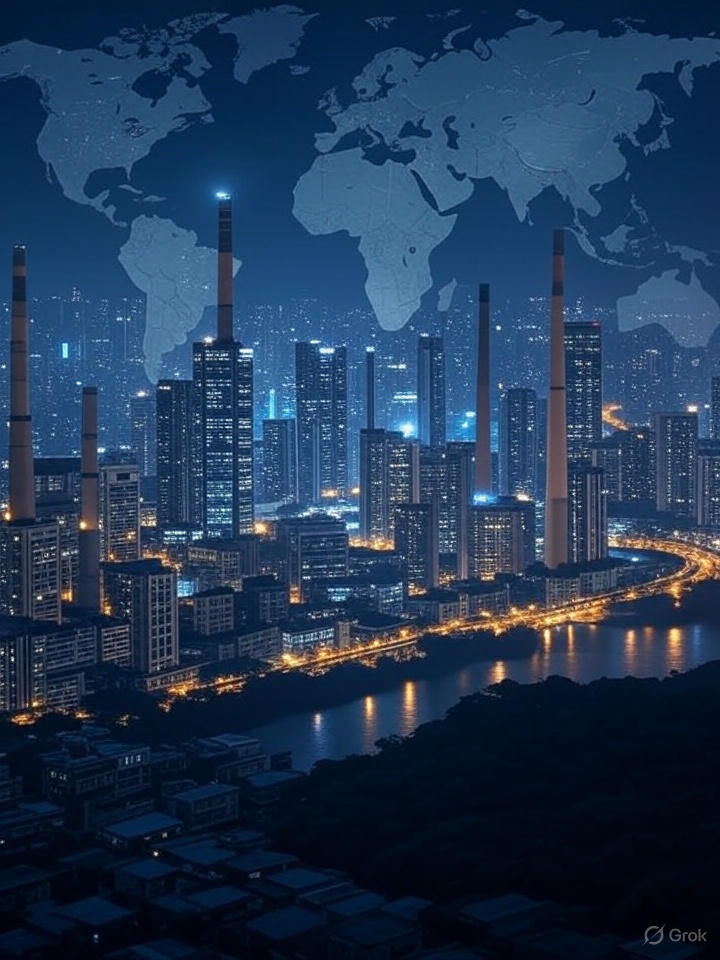India and U.S. Locked in High-Stakes Trade Talks: A Battle of Economic Might and National Pride
- thebrink2028
- Jun 12
- 3 min read

As India and the United States race toward a July 8, 2025, deadline to finalize a Bilateral Trade Agreement (BTA), tensions are mounting. The U.S. is pressing India to open its agriculture, dairy, and pharmaceutical markets, wielding the threat of resumed tariffs, 10% universal and 16% country-specific, paused since April 2025. India, fiercely protective of its 700 million farmers and its economic sovereignty, is pushing back, threatening retaliatory tariffs.
For TheBrink readers, this is a geopolitics with far-reaching implications.
The U.S. Demands: Economic and Political Drivers
The U.S. is pushing for deep concessions: lower tariffs on agricultural goods (India’s 37.7% vs. U.S.’s 5.3%), access to India’s dairy market (28.4% tariffs), relaxed pharmaceutical IP rules, and fewer digital trade restrictions. These align with Trump’s “America First” agenda, driven by:
Economic Goals: U.S. farmers, backed by subsidies, want to tap India’s 1.3 billion consumers for surplus crops (soybeans, corn) and dairy. Pharmaceutical giants seek weaker IP protections to boost profits, threatening India’s generic drug sector. Tech firms like Amazon aim to ease India’s data localization rules.
Political Pressures: With U.S. midterms coming up in 2026, Trump needs trade wins to satisfy farmers and corporations. His recent tariff truce with China (February 2025) and talks with the UK show a pattern of leveraging tariffs for concessions.
The U.S. uses deadlines and tariff threats to create urgency, banking on India’s $45.7 billion trade surplus and need for stable U.S. ties to force compliance.
Similar to past U.S. strategies: China faced tariffs in 2018-2020 until a Phase One deal, Canada opened dairy markets in the 2018 USMCA, and Japan eased beef restrictions in 2019 to avoid auto tariffs. India, with its massive domestic market, is a tougher target.
India’s Stand: Farmers and Sovereignty First
India, led by PM. Modi and Agriculture Minister Shivraj Singh Chouhan, is resolute. Opening agriculture and dairy risks devastating 700 million rural livelihoods, a political non-starter. India’s 2019 RCEP exit over dairy fears and recent wheat export bans reflect this priority. The U.S. offer, minimal reciprocal access for Indian textiles and IT, feels one-sided, prompting India to threaten $1.9 billion in WTO-sanctioned tariffs on U.S. goods like petrochemicals and medical devices.
India’s stance blends pragmatism and pride. Modi’s Atmanirbhar Bharat (self-reliant India) vision and rural voter base demand resistance to foreign pressure. Public sentiment frames U.S. demands as “bullying,” reinforcing India’s resolve. Yet, India must balance this with geopolitical realities, U.S. ties are vital amid neighbourhood tensions.
Global Stakes
This standoff reverberates globally. A U.S. win could embolden it to pressure other nations, while India’s resistance might inspire defiance in Japan or the EU. India’s $37.7 billion exports to the U.S. (up 28% in 2025) and $2.22 billion in U.S. agricultural imports highlight mutual stakes. A trade war would disrupt both economies, but a deal could push bilateral trade toward $500 billion by 2030.
What’s Next? TheBrink's Predictive Outlook
Based on verified data and historical patterns, here’s how events may unfold:
Most Likely (60% Chance): Interim Deal
India offers tariff cuts on non-sensitive U.S. goods (e.g., almonds, apples) while protecting dairy and grains. The U.S. eases tariffs on Indian textiles. An “early harvest” deal by July 8, 2025, averts tariffs, with a broader BTA by October. This balances India’s domestic pressures and Trump’s need for a win.
Risky Scenario (30% Chance): Tariff Escalation
Talks collapse as India rejects U.S. demands, citing farmer protests. Tariffs resume in August 2025, with India retaliating against U.S. goods. Economic pain forces renewed talks by year-end, but trust erodes.
Unlikely (10% Chance): India Concedes
India fully opens markets, risking rural unrest and political backlash. This is improbable given Modi’s voter base and India’s WTO leverage.
The India-U.S. BTA talks are real, while sensational headlines may amplify tensions, the negotiations reflect a genuine clash of interests: U.S. economic might versus India’s sovereignty and rural priorities. As the July 8 deadline, India’s strategic defiance, suggests a compromise is likely, but escalation remains a risk.
For readers, this saga in global trade, power meets pride, and India’s stand could redefine its role on the world stage.
-Chetan Desai (chedesai@gmail.com)


